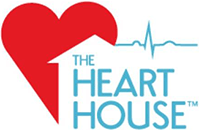Understanding Vascular Ultrasound
A vascular ultrasound, also known as a Doppler ultrasound, is an imaging test that uses high-frequency sound waves to evaluate blood flow in the arteries and veins.
What You Should Know:
The sound waves emitted by this advanced diagnostic tool echo as they bounce off of blood vessels and arteries, creating a detailed image that allows your physician to evaluate and diagnose numerous conditions, such as peripheral artery disease (PAD), deep vein thrombosis (DVT), and other vascular conditions. Follow-up ultrasounds may also be used to monitor disease progression or the effectiveness of treatment.
What is an ABI Screening?
Vascular ultrasounds may be used in conjunction with an ankle-brachial index (ABI) screening to provide a comprehensive evaluation of the vascular system. ABI screenings compare the blood pressure in the ankles to the blood pressure in the arms to uncover any narrowing or blockages in the arteries. An ABI screening can also help diagnose PAD.
Could PAD be Affecting Your Legs?
Take Our Free Online Assessment to Find Out
Peripheral artery disease (PAD) is a common circulatory condition that can lead to leg pain and walking problems. People with PAD are often asymptomatic at the onset of this condition, so early intervention and testing are critical for improving your heart health. Our easy-to-use online self-assessment can help determine if you may be at risk for PAD and if you should schedule a consultation with a dedicated vascular specialist to discuss further testing.
When is a Vascular
Ultrasound Used?
Vascular ultrasound is a diagnostic tool that is used to uncover conditions affecting the veins and arteries or to monitor the effectiveness of vascular treatments.
Common conditions diagnosed using a vascular ultrasound:
- Peripheral artery disease (PAD)
- Carotid artery disease
- Deep vein thrombosis (DVT)
- Chronic venous insufficiency
- Varicose veins
- Venous insufficiency
- Aneurysms
- Lower extremity edema
- Leg pain or ulcers
- Vascular trauma or injury
What to Expect During
a Vascular Ultrasound
How To Prepare
No special preparation is needed prior to receiving a venous ultrasound. A short fasting period may be requested if abdominal veins are to be examined, but it is generally not required. The entire test typically takes 30-45 minutes to complete and is painless.During The Test
During a vascular ultrasound, a small probe is placed directly on the skin over the blood vessel being examined. The probe emits sound waves that bounce off the flowing blood and return echoes. The echoes are converted into images on a monitor, which shows the speed and direction of blood flow, allowing your doctor to evaluate circulation in the arteries and veins.After The Test
Vascular ultrasounds are non-invasive and require no sedation. Patients can typically drive home immediately following the procedure and continue their daily routine. Consult with your doctor to determine if additional testing is needed after the ultrasound.Benefits of a Vascular Ultrasound
A vascular ultrasound is often the next advanced diagnostic step after an ABI test to thoroughly evaluate PAD or other vascular conditions. The ultrasound provides vital imaging that can guide decisions about treatment.
Benefits of getting a venous ultrasound:
- Non-invasive
- No radiation
- Painless
- Detailed, High-Resolution Imagery
- Rapid Results
Photo Gallery
Video Gallery
Testimonials
Photo Gallery
Get To Know Our Cardiovascular Specialists
In Search of Care? Request a Consultation Today





